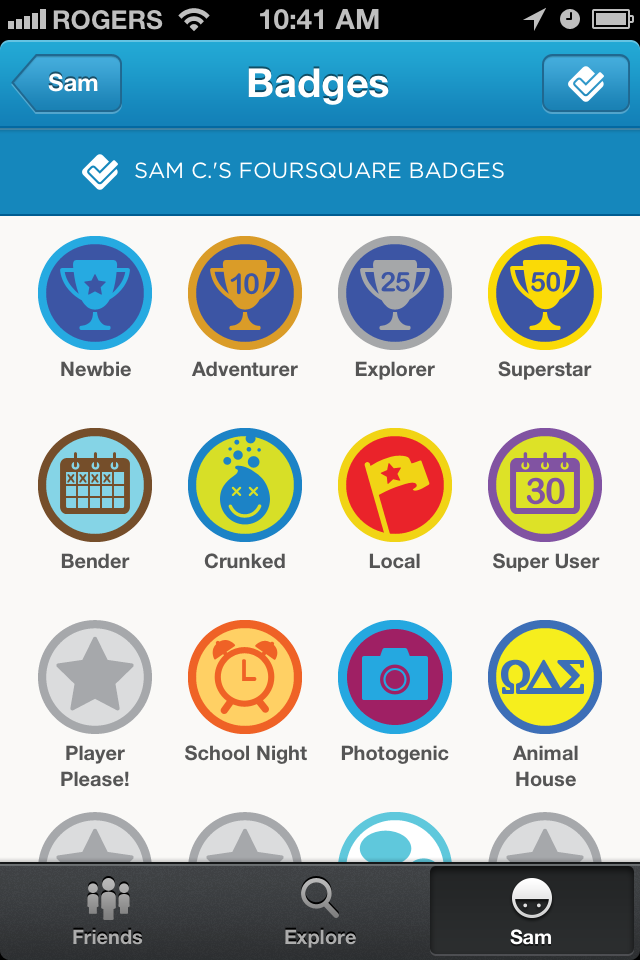

At some fundamental level, all games are built from the same basic concept. From Skyrim to football to Monopoly to poker, a player has both a goal and a set of rules that frame exactly how he or she achieves that goal. Some rules say what you can do, some say what you cannot. All the same, something about our brains craves rules. In a very innately human way, they create challenges for us to exercise our minds and bodies. At the same time, it’s very arbitrary. There’s no intuitive reason why one must dribble a basketball or have a hand of five rather than six cards in poker, and yet these restrictions invigorate and stimulate us to achieve arbitrary goals. Mind you, I am not saying games are pointless, but rather that there is tremendous potential in encouraging the kind of behavior seen when one plays a game. In fact, many people are trying to do just that.
A few years ago, game developer Nick Pelling coined the term “gamification” to describe the concept of harnessing people’s natural interest in games and applying it to other tasks. Relatively mundane tasks such as shopping and learning can enlivened by injecting a little bit of what make games so addicting. Adding rewards such as points, awards, and virtual currency for doing certain tasks is one simple way to instantly transmute the ordinary into a game-like activity. Anyone familiar with Reddit knows that these points that have absolutely no intrinsic value can be a powerful motivator. For those unfamiliar with the site, user-submitted stories can be either supported with an “upvote” or rejected with a “downvote.” Votes add to your “karma,” which are really just Internet points that serve no clear purpose. At the same time, people do genuinely value these points. Though things get more complicated with virtual currency, which often does have utility and monetary value, the underlying concept of “the reward” is undeniably enthralling. A more complicated gamification strategy is to make the tasks themselves more like games. Most educational games do with this subjects like math and reading by offering not only rewards but also a clear progression of difficulty level and multi-media assets like music and graphics. These games tend to appeal to young children just starting their education, but the same concepts work with adults, perhaps now more than ever.
As pocket-sized computerized Swiss-army knives, smartphones allow one to have an app for just about any situation. Aside from the wealth of available games, one can find utilitarian apps that employ the aforementioned strategies. One such app, GAIN Fitness, is a workout tracker that one can use to plan a workout as well as chart their progress. It displays progress bars, keeps track of points, and even tracks achievements such as your “Workout Streak.” Effectively, you’re a video game character and those are your stats. Yes, I’m exaggerating, but the progress bars and points still tickle the brain in a very game-like way, encouraging you to reach the next “level” in your workout.
Another app, SessionM, was explicitly designed to use gamification strategies to encourage engagement and customer loyalty. The app serves as a gamified “layer” through which you run your other apps. You gain points for using certain apps affiliated with SessionM, as well as watching ads, and can then redeem those points for rewards such as gift-cards and coupons. Your user level determines how good your possible rewards are, which encourages the user to use the app as much as possible. It’s not the most subtle use of gamification, but it doesn’t have to be. For the most part, the concept just works. In fact, it’s lurking in many activities you take part in every day.
Hot cheese, up front! Antonio’s has hot slices of pizza for just a buck every Friday night. It’s a deal that’s too good to pass up. I just remembered, they gave me one of those Antonio’s business cards last time I was there. They punch a hole in it for each slice you get, and after ten you get one free. Well, of course I’m going to make sure I get my extra hole punches tonight, since they’re so cheap. I’ll save this free pizza for a rainy day. Antonio’s is a game, albeit a relatively boring game where my goal is free pizza and the rules are that I have to buy ten slices of pizza. But there are strategies involved. If I time my pizza purchases for Friday nights I maximize the value of my free pizza. At the same time, it’d be inefficient to redeem that card for the free pizza on a Friday since I’d get more out of it on a normal day. It seems silly, but I just played a game with Antonio’s. They know this, and they know it works, because I likely bought more pizza than I really wanted (or should eat) because I wanted to “win” the game. When you start to think about goals, rules and strategies, you see that everything is a game. In any endeavor, you have what you want, what you can do, what you can’t do and what works best. In less than a month, I’ll be done with the “College” level. Once I beat “Job Search” I’ll move on to the “Job” level. It’s only fitting that gamification is the future, because really, it was here all along.